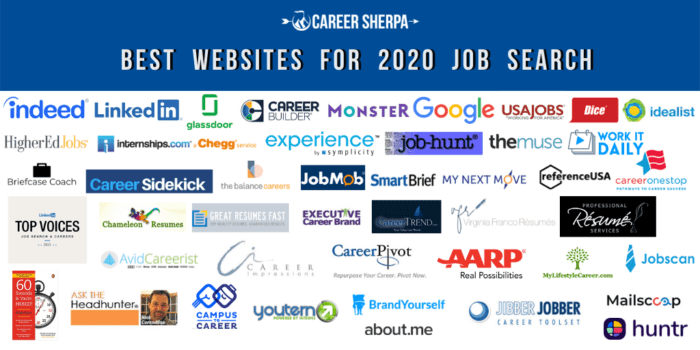How to Build a Successful Career Portfolio
A career portfolio is more than just a collection of your work; it’s a powerful tool that showcases your professional skills, experience, and growth. Whether you’re an aspiring employee or a seasoned professional looking to make a career change, a well-organized portfolio can set you apart in a competitive job market. But how exactly can you build a successful career portfolio that highlights your strengths and achievements? In this article, we’ll guide you through the steps to create a portfolio that helps you impress potential employers, clients, or collaborators.
Understand the Purpose of a Career Portfolio
Before diving into creating your portfolio, it’s important to understand its purpose. A career portfolio is a personal showcase of your professional journey, designed to demonstrate your skills, experiences, accomplishments, and personal brand. It’s often used by job seekers, freelancers, and professionals in creative fields such as design, writing, and consulting.
The portfolio serves as a tangible representation of your abilities and can be used in interviews, presentations, or when networking. It’s more than just a resume—it’s a comprehensive representation of who you are, what you’ve accomplished, and where you’re headed in your career.
Select the Right Medium for Your Portfolio
There are various ways to present your career portfolio. Traditional portfolios involve printed materials such as documents, resumes, and printed samples of your work. However, in today’s digital world, an online portfolio is often the most effective way to showcase your skills, particularly if you work in tech, marketing, or creative industries.
A digital portfolio can be hosted on a personal website, through a platform like LinkedIn, or even using specialized portfolio sites like Behance or Dribbble. Make sure to choose the medium that best suits your career field. For example, graphic designers or photographers may opt for visually-driven platforms, while writers might prefer a simple blog format to showcase articles and published work.
Organize Your Portfolio with Relevant Sections
A strong career portfolio should be organized in a clear, easy-to-navigate way. Here are the key sections to include:
- Introduction/About Me: Start with a brief overview of who you are, your professional background, and your career goals. This section should provide insight into your personality and set the tone for the rest of the portfolio.
- Resume: Include your most up-to-date resume or curriculum vitae (CV). Make sure to highlight key achievements, education, certifications, and work experience.
- Work Samples/Projects: Showcase your best work in this section. For professionals in creative fields, include images, design samples, writing excerpts, or video demonstrations. For others, provide case studies, reports, and presentations that demonstrate your skills and problem-solving abilities.
- Skills & Achievements: Highlight any special skills you’ve acquired, such as technical proficiency, language abilities, or certifications. Showcase your accomplishments and how you’ve made an impact in previous roles.
- Testimonials/References: Including testimonials or references from previous employers or clients adds credibility to your portfolio. Positive reviews from colleagues or supervisors can give potential employers or clients confidence in your abilities.
Keep Your Portfolio Updated and Tailored
A successful career portfolio is dynamic, not static. You should update your portfolio regularly to reflect your latest achievements, skills, and work samples. Whenever you complete a significant project, gain a new skill, or achieve a milestone in your career, add it to your portfolio.
In addition, tailoring your portfolio for different opportunities is essential. For example, if you’re applying for a specific job, ensure the skills, experiences, and work samples that align with that role are prominently featured. Customizing your portfolio shows you’re not just a generic candidate but someone who understands the job requirements and is capable of delivering results.
Use Your Portfolio as a Networking Tool
Your career portfolio isn’t just for job applications—it’s also a great tool for networking. When connecting with professionals at events or through online platforms like LinkedIn, share your portfolio as a way to introduce yourself and provide tangible examples of your work. Having a well-constructed, accessible portfolio can open doors to new business opportunities, collaborations, or job referrals.
Whether you’re sending a follow-up email after a networking event or connecting with a recruiter, a portfolio adds a personal touch and makes it easier for people to understand the full scope of your abilities.
Frequently Asked Questions (FAQs)
Q1: What should I include in my career portfolio?
A1: Your portfolio should include an introduction, a resume, work samples, achievements, and testimonials. Tailor the content to highlight your strengths and the skills most relevant to your career goals.
Q2: How often should I update my career portfolio?
A2: You should update your portfolio regularly—ideally, after every major project or achievement. Keeping it current ensures it reflects your most up-to-date work and skill set.
Q3: Should I have a digital or physical portfolio?
A3: A digital portfolio is generally the best choice, especially in today’s job market. It’s easy to share, update, and tailor to specific opportunities. However, in some industries, a physical portfolio may still be effective.
Q4: Can I use my career portfolio for freelance work?
A4: Yes, a career portfolio is a valuable tool for freelancers. It allows potential clients to see your skills and past work, helping you stand out in a competitive freelance market.
Q5: How do I make my portfolio stand out from others?
A5: Make your portfolio visually appealing and easy to navigate. Use high-quality work samples, add personal touches such as a short bio, and ensure the design reflects your professional brand.


